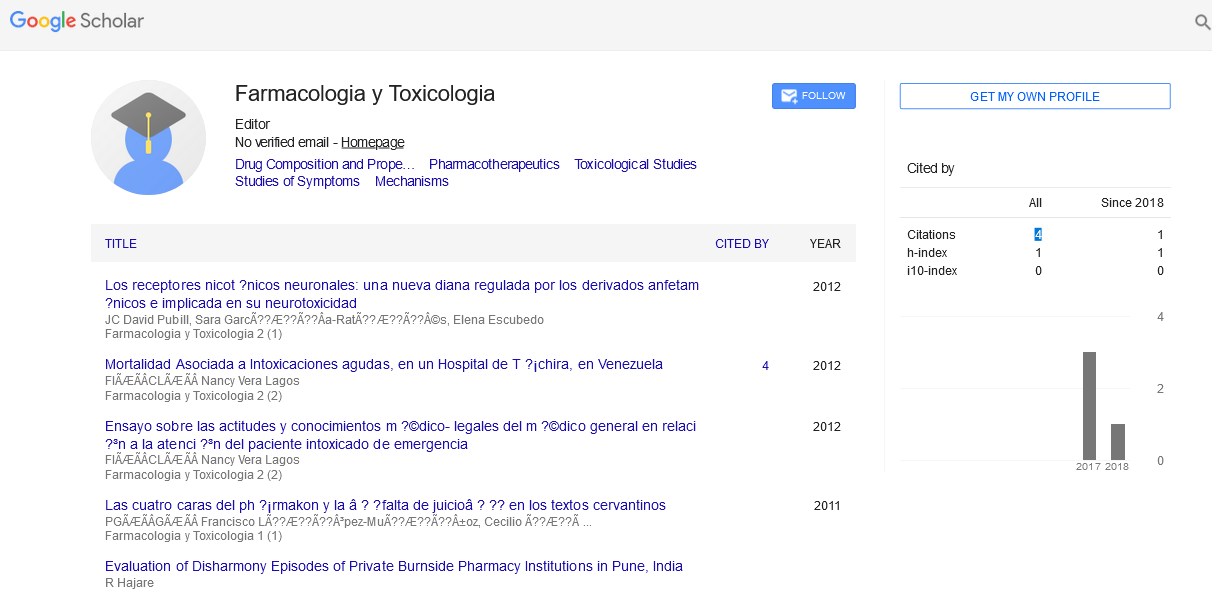Perspective - (2024) Volume 14, Issue 6
Dose-Response Relationship in Pharmacology
Sara Novak*
Department of Pharmacology, University of Jadwigha, Rzeszow, Poland
*Correspondence:
Sara Novak, Department of Pharmacology, University of Jadwigha, Rzeszow,
Poland,
Email:
Received: 07-Aug-2024, Manuscript No. IPFT-24-15142;
Editor assigned: 12-Aug-2024, Pre QC No. IPFT-24-15142 (PQ);
Reviewed: 26-Aug-2024, QC No. IPFT-24-15142;
Revised: 02-Dec-2024, Manuscript No. IPFT-24-15142 (R);
Published:
30-Dec-2024
Introduction
The dose-response relationship is a fundamental concept in
pharmacology, toxicology and medicine, describing how the
body responds to varying concentrations of a substance, such as
a drug or toxin. This relationship helps determine the optimal
dose that maximizes therapeutic effects while minimizing
adverse reactions.
Description
Basic principles
The dose-response relationship is typically illustrated using a
dose-response curve, which plots the effect of a drug against its
dose. The x-axis represents the dose, while the y-axis represents
the magnitude of the response. The curve usually has a
sigmoidal (S-shaped) form, reflecting three key phases:
Threshold phase: At low doses, there is little to no observable
effect. This phase indicates the minimum dose required to
produce a measurable response.
Linear phase: As the dose increases, the response also
increases proportionally. This phase shows a direct relationship
between dose and effect, where small changes in dose result in
predictable changes in response.
Plateau phase: At high doses, the response levels off,
reaching a maximum effect. Further increases in dose do not
produce a significant increase in response, indicating saturation
of the biological system.
Types of dose-response relationships
There are two main types of dose-response relationships:
Graded and quantal.
Graded dose-response: This type measures the continuous
range of responses across different doses in a single subject or
biological system. For example, increasing doses of a blood
pressure medication may show a gradual reduction in blood
pressure.
Quantal dose-response: This type measures the all-or-nothing
responses across a population. For instance, the percentage of
individuals experiencing pain relief at different doses of an
analgesic. The resulting data often generates a bell-shaped curve, indicating the variability of responses within the
population.
Key parameters
Several parameters are crucial for interpreting dose-response
curves:
E icacy (Emax): This represents the maximum response
achievable with a drug. It indicates the drug's potential
effectiveness.
Potency (EC50): This is the dose at which 50% of the
maximum response is observed. A lower EC50 indicates higher
potency, meaning a smaller dose is needed to achieve half of the
drug’s maximum effect.
Therapeutic Index (TI): This is the ratio between the Toxic
Dose (TD50) and the Effective Dose (ED50) for 50% of the
population. A higher TI indicates a wider margin of safety.
Applications in drug development
Understanding the dose-response relationship is vital in drug
development for several reasons:
Dose optimization: Identifying the optimal dose that
maximizes therapeutic effects while minimizing side effects is
crucial. This involves finding a balance between efficacy and
safety.
Therapeutic window: Determining the range of doses that
produce therapeutic effects without causing significant adverse
effects is essential for safe medication use.
Risk assessment: Evaluating the potential toxicity and side
effects of a drug at various doses helps in assessing its safety
profile.
Factors in luencing dose-response
Several factors can influence the dose-response relationship,
including:
Biological variability: Genetic differences, age, gender and
health status can affect an individual's response to a drug.
Pharmacokinetics: The absorption, distribution, metabolism
and excretion of a drug can influence its concentration at the
target site, affecting the dose-response relationship.
Pharmacodynamics: The interaction between the drug and its
target, such as receptors, can vary, affecting the magnitude of
the response.
Drug interactions: Concurrent use of other medications can
alter the dose-response relationship through synergistic or
antagonistic effects.
Clinical implications
The dose-response relationship has several important
implications in clinical practice:
Individualized therapy: Understanding that patients may
respond differently to the same drug dose is crucial for
personalized medicine. Clinicians must adjust doses based on
patient-specific factors.
Side effect management: Monitoring and managing side
effects by adjusting doses can improve patient compliance and
outcomes.
Overdose prevention: Recognizing the plateau phase helps
prevent overdose, as increasing the dose beyond a certain point
does not enhance therapeutic effects but increases the risk of
toxicity.
Challenges and considerations
While the dose-response relationship provides valuable
insights, several challenges and considerations must be
addressed:
Nonlinear responses: Some drugs exhibit nonlinear doseresponse
relationships, where small dose changes can result in
disproportionately large effects or vice versa.
Adaptive responses: The body can adapt to prolonged drug
exposure, altering the dose-response relationship over time.
Tolerance, where higher doses are needed to achieve the same
effect, is a common adaptive response.
Complex interactions: Drugs may have multiple effects or
targets, leading to complex dose-response relationships that are
difficult to predict.
Conclusion
The dose-response relationship is a cornerstone of
pharmacology, providing a framework for understanding how
drugs interact with biological systems. By elucidating the
relationship between dose and effect, this concept guides the
development, optimization and clinical use of medications.
Despite its challenges, the dose-response relationship remains
an essential tool for ensuring the safe and effective use of drugs
in medical practice.
Citation: Novak S (2024) Dose-Response Relationship in Pharmacology. Farmacologia Toxicologia, Vol.14 No.6: 057





